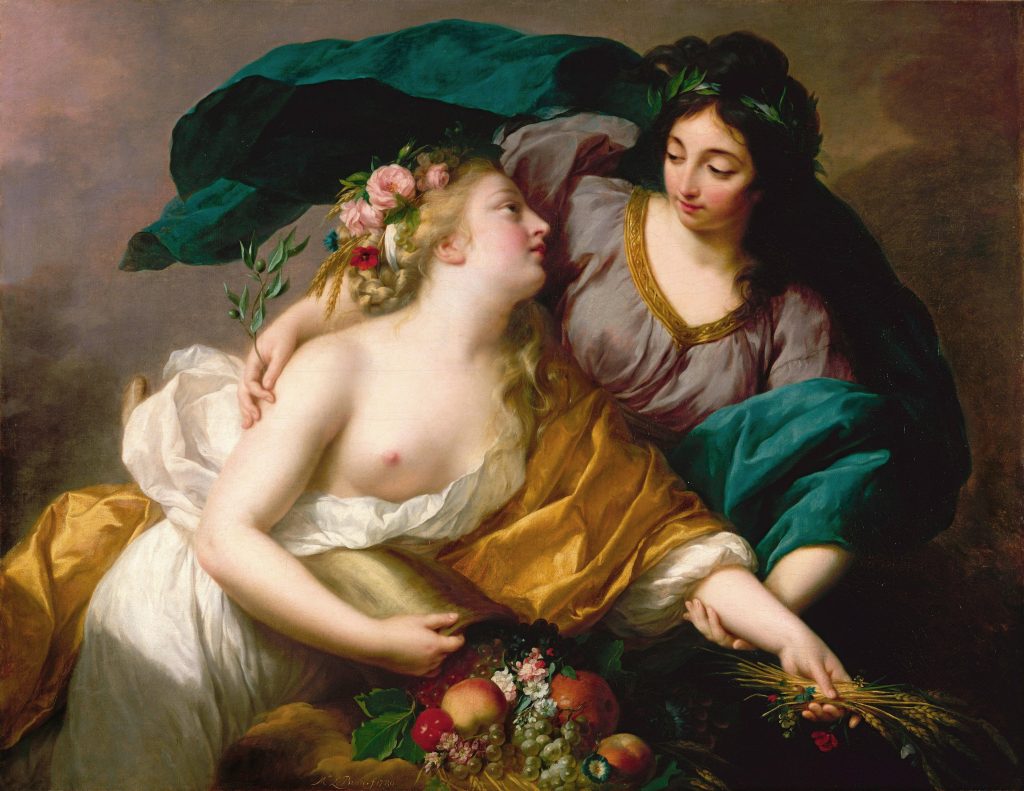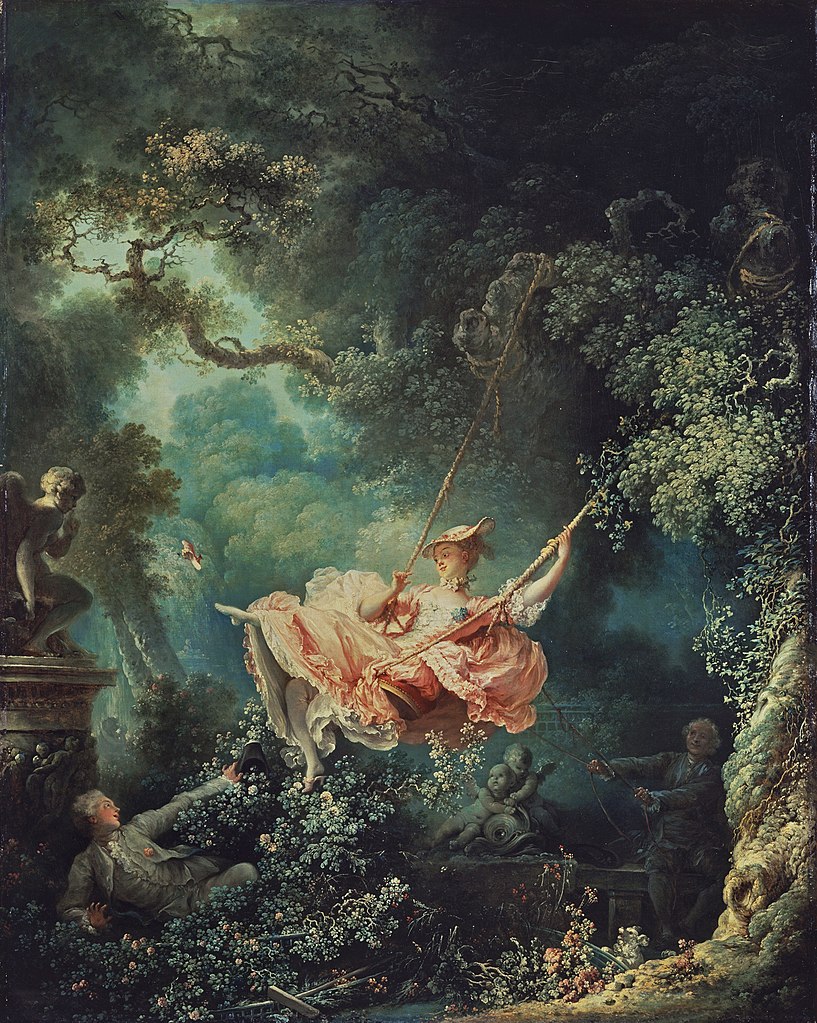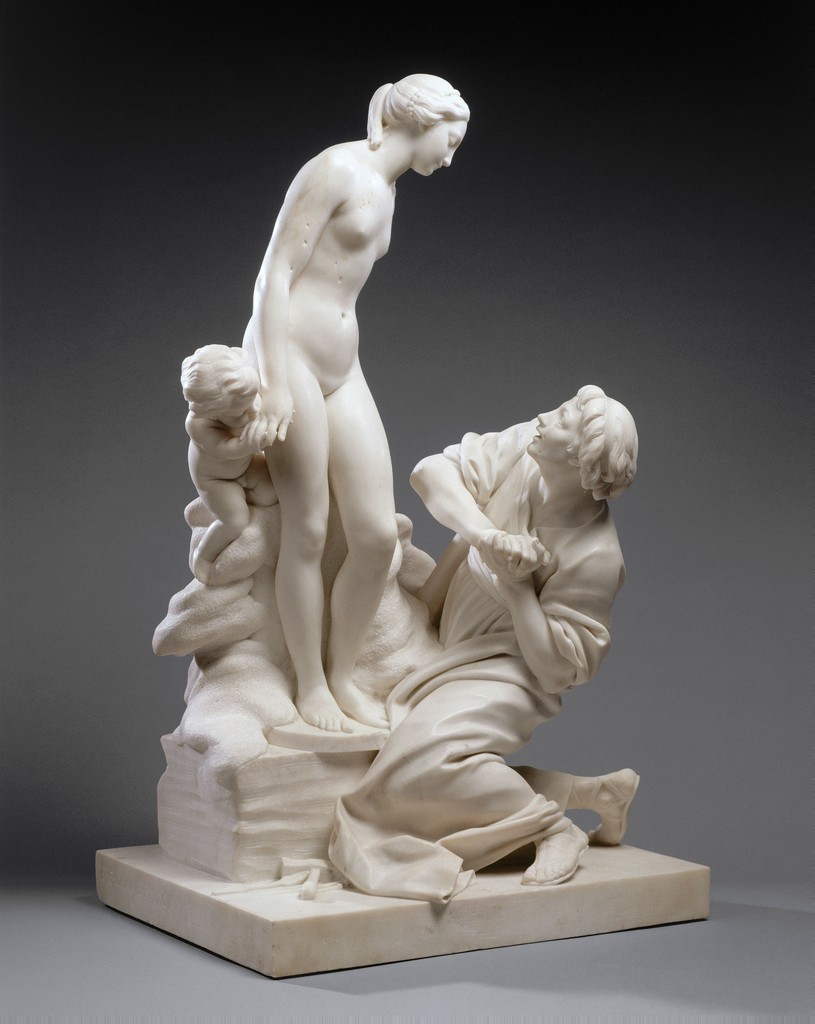Chapter 10.12: Rococo Painting and Sculpture
Painting during the Rococo period has many of the same qualities as other Rococo art forms such as heavy use of ornament, curved lines and the use of a gold and pastel-based palette. Additionally, forms are often asymmetrical and the themes are playful, even witty, rather than political, as in the case of Baroque art. Themes relating to myths of love as well as portraits and idyllic landscapes typify Rococo painting.
Antoine Watteau
Antoine Watteau is considered to be the first great Rococo painter. His influence is visible in the work of later Rococo painters such as Francois Boucher and Honore Fragonard. Watteau is known for his soft application of paint, dreamy atmosphere, and depiction of classical themes that often revolve around youth and love, exemplified in the painting Pilgrimage to Cythera.
There are only a handful of moments in history that we can point to that changed everything. The invention and adoption of the printing press was certainly one. As a result of the wider availability of books, literacy rates in Europe dramatically increased. Readers were empowered and in many ways we can trace the origin of our own information revolution to 15th-century Germany and Gutenberg’s first printing press.
Image and Video

Antoine Watteau, Pilgrimage to Cythera (5:19)
Elizabeth Vigee-Lebrun
The artist who created this opulent showpiece became famous and wealthy as Queen Marie-Antoinette’s official court painter. She was born to Louis Vigée and Jeanne Maissin in a bustling section of Paris. In her autobiography Souvenirs written towards the end of her life, Vigée-LeBrun wrote that her father, a minor portraitist, doted on her, wishing his daughter fame and good fortune; and that he cherished her early efforts at drawing. Vigée-LeBrun wrote that her mother thought her awkward and ugly. Nevertheless, she grew up to be intelligent, beautiful, rich, and talented, characteristics on display in her Self-Portrait of 1790.
Created soon after her swift departure from France at the onset of the French Revolution, Vigée-LeBrun’s Self-Portrait in the Galleria degli Uffizi in Florence, is one of her best-known pictures. It is a late example of the Rococo style. Rococo epitomized a fashionable ideal, wherein perpetual youth was libertine and pleasure-loving, its sexual gratification taken without guilt or consequence. Despite this, The artist, like her royal patron, was extremely conservative in her politics.


Francois Boucher
Francois Boucher became a master of Rococo painting somewhat later than Watteau. His work exemplifies many of the same characteristics, though with a slightly more mischievous and suggestive tone. Boucher had an illustrious career, and became court painter to King Louis XV in 1765. There was controversy later in his career as Boucher received some moral criticism from people such as Diderot for the themes present in his work. The Blonde Odalisque was particularly controversial, as it supposedly illustrated the extramarital affairs of the King.

Image and Videos

Fragonard, The Swing (3:21)
Sculpture
In sculpture, the work of Etienne-Maurice Falconet is widely considered to be the best representative of Rococo style. Generally, Rococo sculpture makes use of very delicate porcelain instead of marble or another heavy medium. Falconet was the director of a famous porcelain factory at Sevres. The prevalent themes in Rococo sculpture echoed those of the other mediums, with the display of classical themes, cherubs, love, playfulness, and nature being depicted most often as exemplified in the sculpture Pygmalion and Galatee.

Media Attributions
- Figure 1. Antoine Watteau (Image source: Erich Lessing Culture and Fine Arts Archives/ART RESOURCE, N.Y. via Artstor. Used with permission, for education use only)
- Figure 2. Elisabeth Louise Vigee-LeBrun, Self Portrait, 1790, oil on canvas. (Galleria degli Uffizi; Image source: University of California, San Diego via Artstor. Used with permission, for education use only)
- Figure 3. Elisabeth Louise Vigée-LeBrun, Peace leads Abundance. Oil on canvas, 1780 (Image source: Erich Lessing Culture and Fine Arts Archives/ART RESOURCE, N.Y. via Artstor. Used with permission, for education use only)
- Figure 4. Francois Boucher, Blond Odalisque. Oil on canvas, 1752. Blond Odalisque was a highly controversial work by Francois Boucher as it was thought to depict an affair of King Louis XV. The work employs serpentine lines, a reasonably pastel palette and themes of love indicative of Rococo artwork (Image source: José Luiz Bernardes Ribeiro, Wikimedia Commons) is licensed under a CC BY-SA (Attribution ShareAlike) license
- Figure 5. Jean-Honoré Fragonard, L’escarpolette (Swing). Oil on canvas, after 1767 (Image source: Wartberg.edu via Wikimedia Commons) is licensed under a Public Domain license
- Figure 6. Etienne-Maurice Falconet, Pygmalion and Galatee. Sculpture in marble, 1761 (Image source: Réunion des Musées Nationaux / Art Resource, N.Y. via Artstor. Used with permission, for education use only)
Candela Citations
- Boundless Art History: Rococo. Provided by: Lumen Learning. Retrieved from: https://www.collegesidekick.com/study-guides/boundless-arthistory/rococo. License: CC BY-SA: Attribution-ShareAlike
- Antoine Watteau, Pilgrimage to Cythera. Authored by: Dr. Steven Zucker and Dr. Beth Harris. Provided by: Smarthistory. Retrieved from: https://smarthistory.org/antoine-watteau-pilgrimage-to-cythera/. License: CC BY-NC-SA: Attribution-NonCommercial-ShareAlike
- Jean-Honoru00e9 Fragonard, The Swing. Authored by: Dr. Ashley Bruckbauer. Provided by: Smarthistory. Retrieved from: https://smarthistory.org/jean-honore-fragonard-the-swing/. License: CC BY-NC-SA: Attribution-NonCommercial-ShareAlike

